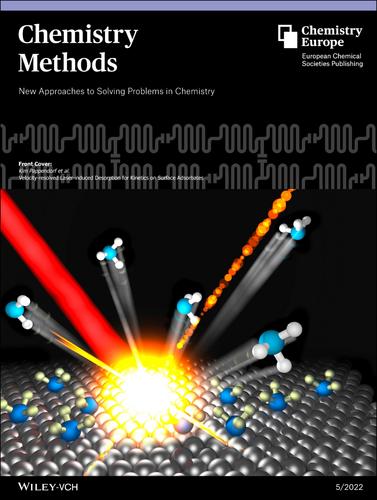封面图:表面吸附动力学的速度分辨激光诱导解吸(化学)。方法5/2022)
IF 6.1
Q1 CHEMISTRY, MULTIDISCIPLINARY
Chemistry methods : new approaches to solving problems in chemistry
Pub Date : 2022-05-02
DOI:10.1002/cmtd.202200029
引用次数: 0
摘要
前盖显示氨分子吸附在原子平面铂表面。一个超短激光脉冲击中金属表面,在100秒内迅速将金属电子加热到几千开尔文。这种高电子温度导致一小部分氨分子以超热速度从表面解吸。更多信息可以在Kim Pappendorf等人的研究文章中找到。本文章由计算机程序翻译,如有差异,请以英文原文为准。

Cover Picture: Velocity-resolved Laser-induced Desorption for Kinetics on Surface Adsorbates (Chem. Methods 5/2022)
The Front Cover shows ammonia molecules adsorbed on an atomically flat platinum surface. An ultra-short laser pulse hits the surface and heats up the metal electron rapidly to several thousand Kelvin within a few 100fs. This high electronic temperature causes a fraction of the ammonia molecules to desorb with hyperthermal velocity from the surface. More information can be found in the Research Article by Kim Pappendorf et al..
求助全文
通过发布文献求助,成功后即可免费获取论文全文。
去求助
来源期刊
CiteScore
7.30
自引率
0.00%
发文量
0

 求助内容:
求助内容: 应助结果提醒方式:
应助结果提醒方式:


